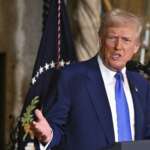
UL, the for-profit arm of consumer products safety researcher Underwriters Laboratories, is among a handful of companies offering what is in effect a stamp of approval for office buildings and their landlords, verifying that their office buildings are clean and safe for employees to return to, and it has verified dozens of buildings so far in the D.C. area.
It is an effort to not only give building owners a badge that tells tenants and their employees that their building is COVID-19 safe, but also another step in what had already been increasing emphasis on more healthy work environments even before the pandemic began.
It’s largely about air quality. And about water.
UL’s Verified Healthy Buildings program includes three tiers that are meant to help building owners and operators to commit to maintaining healthy buildings. It includes indoor air and ventilation, a water quality component, and indoor environment such as quality of lighting and acoustics.
The testing methods and criteria are not arbitrary. They stack up against industry organizations such as Environmental Protection Agency and World Health Organization guidelines.
It is not necessarily about cleaning protocols. Most office spaces are scrubbed cleaner than they’ve probably ever been because of concern about COVID-19 transmission, but recent research has shown that touch surfaces are not as big a risk as initially thought. The real risk, by far, is through airborne transmission.
“We are seeing more of a shift to air quality and ventilation, and making sure there are air changes in a space, because that is where the risk really lies,” said Sean McCrady, director of assets and sustainability, real estate and properties at UL.
“We are telling people to focus on the fundamentals. You don’t need to spend a lot of money, and there is tons of research that says if you focus on getting good ventilation, focus on filtrating properly and bringing in plenty of fresh air, you are going to really move the needle big time when it comes to risk. And really, beyond COVID,” he said.
Beyond air, an immediate concern for office buildings because of the shift to working at home during the past year, is the quality of building water supplies.
“Nobody is getting COVID, as far as I know, from bad water. But what we’re seeing is that during this unprecedented time, you have all these buildings that have been underused, and you have water sitting in pipes. And when water sits in pipes and it doesn’t flow, you get all sorts of funky stuff going on,” McCrady said.
“You get leaching of toxic metals, biofilm that can cause waterborne pathogens to grow. It can get pretty nasty. So I think we will see a big problem with water quality on the tail end of vacancy in buildings and that’s why it’s important for people to know how to flush those systems, and get on top of it now before people start coming back in droves,” he said.
UL has given its Verified Healthy Buildings designation to about 100 buildings so far in the D.C.-metro area, and since September, to nearly 200 million square feet around the nation either verified or committed to the program.
Its inspectors will revisit buildings at least two times a year to confirm they maintain the mark.
McCrady said its inspectors almost always find action items, and most are usually routine maintenance or housekeeping issues. He says UL inspectors collaborate with building owners and engineers, instilling a culture of safety protocols going forward.
Information about the UL Verified Healthy Building Mark program is online.














